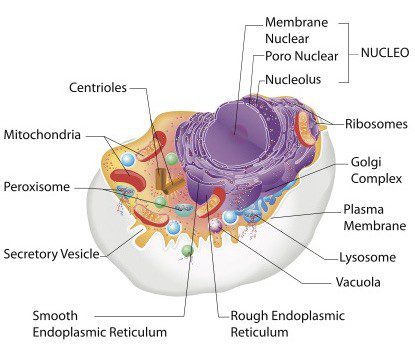First, let’s be clear on what cancer is and how it may hurt your health.
The building blocks of your brain, lungs, liver, heart, skin, and other organs are one or more of the following types of tissue:
- Nervous tissue — forms your brain, cranial nerves, spinal cord, and all of the peripheral nerves that supply your body.
- Connective tissue — fibrous tissues that often provide a supportive role. Examples include cartilage, ligaments, and tendons. Your bones and blood are specialized types of connective tissue.
- Epithelial tissue — specialized layers of cells that provide a protective coating over the surfaces of your organs. Examples include the outer lining of your skin and the inner linings of your breathing airways, digestive tract, and urinary tract.
- Muscle tissue — layers of cells that provide contractile ability. Three distinct types of muscle tissue found in your body are:
- Skeletal muscles — allow voluntary movements of your body, including your eyes and facial muscles.
- Smooth muscles — allow involuntary contractions within your body. Examples include contractions that propel food through your digestive tract and contractions that push blood through your blood vessels.
- Cardiac muscle — specialized tissue found only in your heart.
All of these tissues have one thing in common:
They are composed of cells. Lots and lots of cells.
This is why one of the first lessons in grade seven biology class is on the structure and function of your cells. Remember learning about mitochondria, endoplasmic reticula, ribosomes, and nucleoli? These organelles and the plasmic fluid (cytoplasm) that they are suspended in are found in all of your cells.
Each cell in your body is a living unit that receives oxygen and nutrients from your blood, converts oxygen and nutrients to energy that helps sustain you, and expels waste products that your blood carries away and deposits into one of five eliminative channels.
Whenever anything goes wrong in your body, it begins at a cellular level.
Genetic material found in the core of all of your cells regulate cellular reproduction, which is really a process of division where one cell splits to become two, two split to become four, and so on.
In a growing child, cellular division is necessary for growth.
In both children and adults, cellular division is an ongoing process that creates new cells to replace cells that die of old age or injury — the average adult loses somewhere between 50 to 70 billion cells per day, and this steady loss of cells is perfectly balanced with new cell formation to keep things in balance.
Cancer, no matter where it occurs in your body, involves a loss of control of cellular division. Cancerous cells don’t divide in a controlled manner and under the direction of healthy genes. Rather, cancerous cells divide in an out-of-control manner and are capable of invading nearby tissues and even spreading to other parts of your body.
We may never identify all factors that trigger and fuel malignant tumor growth. Excessive exposure to certain drugs (recreational and prescription), electromagnetic radiation, harmful chemicals in highly processed foods — these are just a few of countless potential causes of malignant cellular division.
We know that excessive exposure to some types of hormones can also disrupt cellular division. So all factors that affect the production and secretion of hormones in your body — including how well and often you sleep and how much emotional stress you experience — certainly represent potential causes of cancerous growth.
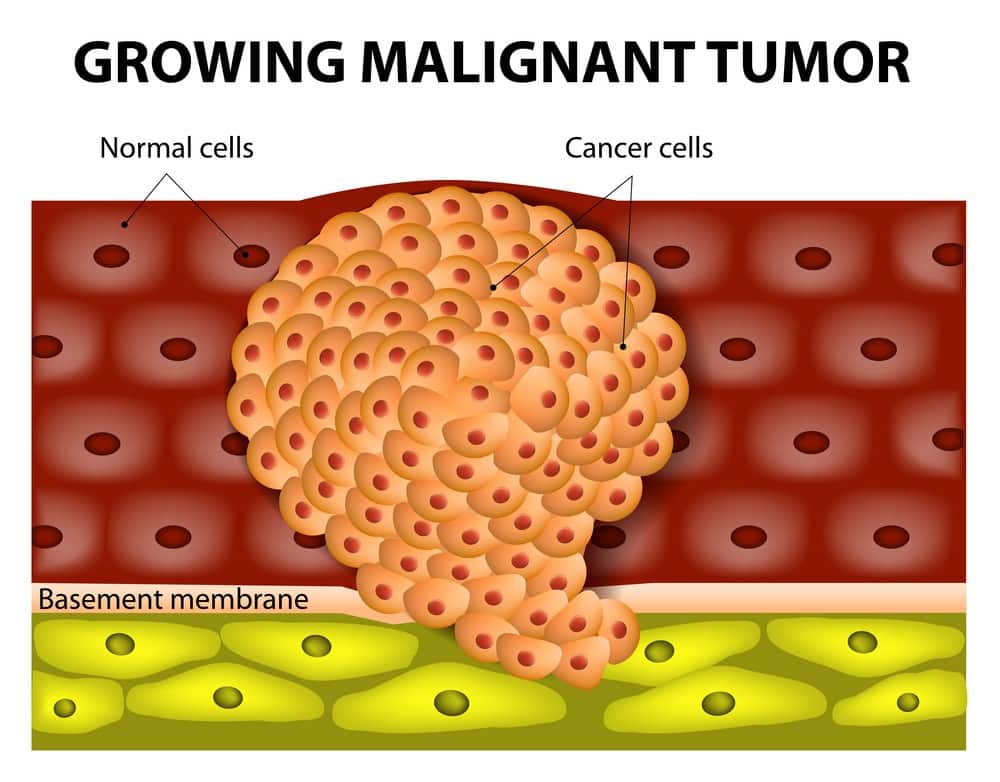
How do malignant cells hurt your health?
When enough of them cluster together in a lump, they can interfere with vital functions.
For example, a growing malignant mass in the stomach can lead to problems with digestion and nutrient absorption.
A malignant tumor in the brain can compress and affect cranial nerves that are responsible for regulating hearing, swallowing, and breathing rate.
If cancerous cells begin to crowd out healthy lung tissue, you may have trouble getting enough oxygen into your blood to fuel energy production. In some cases, cancer in the lungs can cause a segment of lung tissue to collapse, which can lead to a fatal infection.
If cancerous cells invade the liver, kidneys, or bones, the danger is in losing the capacity to regulate levels of minerals, toxins, waste products, and other substances in your body that need to be finely buffered and balanced at all times.
Malignant tumors do their damage primarily through crowding. They create dysfunction by pressing on things, blocking things, and if their causes remain in place, they do more pressing and blocking.
If cancerous masses would just stop growing before affecting vital functions, you could live with them without grave risk to your health. In fact, such masses exist in a lot of people — we call them cysts, fibroids, polyps, and benign tumors.
Malignant tumors are problematic because eventually, they tend to grow and spread to a point where they create significant dysfunction somewhere in the body. Breast cancer by itself doesn’t pose a serious threat in most cases — breast cancer needs to be addressed because if left unchecked, it will eventually spread to another part of the body where it can compromise vital functions.
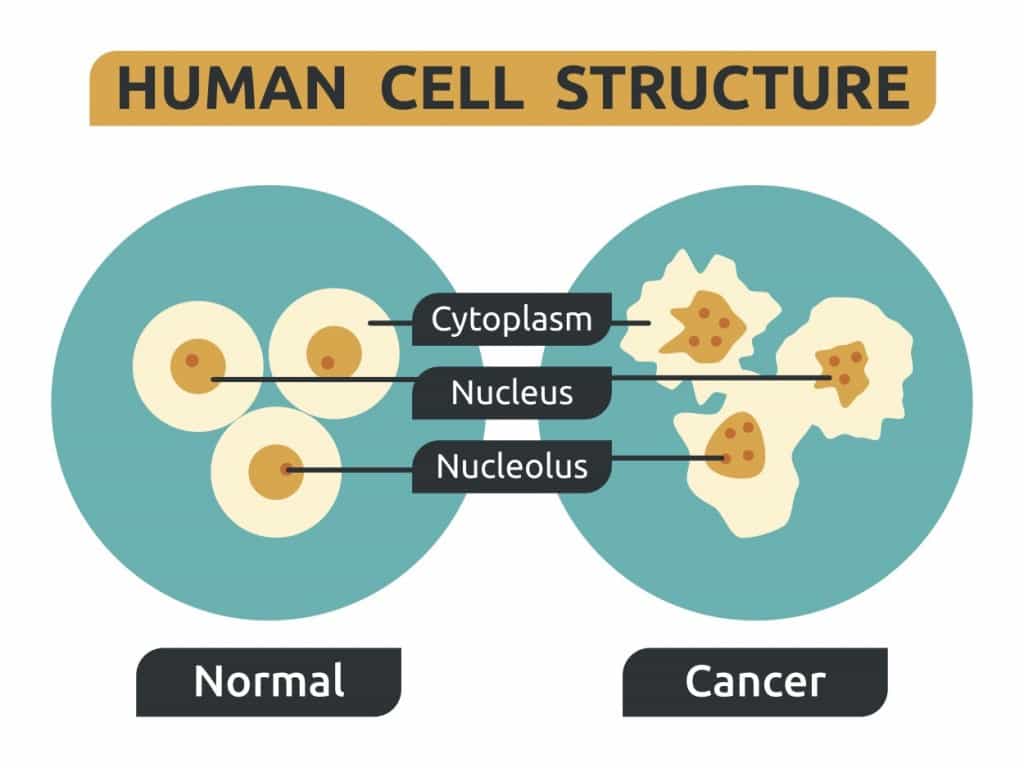
So what should you do if you are diagnosed with cancer?
Let me preface my thoughts here by making it clear that I do not specialize in helping people deal with cancer. I am a chiropractor with 17 years of education and experience helping people get and stay well through dietary and lifestyle choices.
My thoughts on cancer and how to address it have taken form over many years. They are based on what I know of human physiology, nutrition, and experience working closely with people who have asked me for guidance as they looked to overcome different types and stages of cancer.
Through my experiences, I have come to firmly believe that whenever possible, it is best to allow the body to heal itself with nourishing foods and plenty of physical and emotional rest.
At the same time, I think it’s important to remain open minded to the potential benefits of conventional medical treatments. And I think this idea gets muted in some natural and alternative health circles by those who proselytize with a little too much philosophy and hype and perhaps not enough consideration for each person’s unique circumstances and knowledge of what conventional medical treatments have to offer.
There’s nothing wrong with preventing and addressing cancer and other forms of illness with diet, lifestyle, and non-toxic, non-invasive therapies. In some cases, a fully natural approach may be enough to lead to a full recovery.
But in some cases, my experience has been that it definitely pays to integrate surgery or other allopathic treatments with a natural approach — doing so can sometimes dramatically improve long term outcomes.
Very generally, I support and encourage surgical excision of malignant masses when a surgeon or group of surgeons have done due diligence with a comprehensive diagnostic workup and strongly feel that the potential benefits of surgical excision outweigh the potential risks of not excising a malignant tumor.
I know that there are some people who are deeply committed to natural healing, so much so that they would rather pass on naturally than to undergo surgery where it is strongly recommended after a thorough diagnostic workup. I wouldn’t make this choice for myself. I would surgically excise a malignant tumor every time under the care of a surgeon who I felt good about.
Do I believe that malignant cells can be destroyed and washed away by our self healing mechanisms? Absolutely. I’ve seen it happen. And I think it’s safe to say that it happens in all of us to some degree every day. Each of us has many trillions — that’s many thousands of billions — of cells with many millions dividing and being replaced every hour. In my mind, it’s almost an absolute certainty that all of us have some cancerous cells at all times, but in a relatively healthy state, our bodies are able to destroy and remove such cells before they cluster together in enough numbers to create a mass that’s significant enough to create trouble. (Apoptosis is the medical term for cellular self destruction or programmed cell death that occurs with aged and/or diseased cells.)
Still, a palpable mass or one that is visible to the naked eye with imaging is a far greater challenge to overcome than a few cancerous cells scattered here and there.

What To Do About Cancer: Part Two — Radiation And Chemotherapy
In part one of this look at what to do about cancer, I expressed support for surgical excision of a malignant tumor whenever deemed prudent by those involved.
Generally, I don’t feel as good about radiation and chemotherapy, but before I explain why, please allow me to say this: if you’ve already undergone radiation or chemotherapy, consider your body strong and resilient, having withstood the harmful effects of these therapies.
Every person’s case is unique, and should be treated as such. This means getting additional professional opinions and researching the statistics on outcomes for chemotherapy and radiation for the type and location of the malignant mass at hand.
Contrary to popular belief within alternative health circles, there is relatively strong evidence to suggest that radiation therapy can significantly extend lifespan with some types of cancer — examples include localized tumors in the cervix and within the neck region.
The same holds true for chemotherapy — if you spend some time searching through archived published research at the national library of medicine, you’ll find that chemotherapy is effective in extending lifespan in a measurable way with some types of cancer — examples include testicular cancer and some types of lymphoma, especially when such cancers are detected early.
Still, it’s clear to me that in most cases of cancer, radiation and chemotherapy do not measurably improve lifespan, and they almost always decrease quality of life. With some cancers, scientific literature is absolutely clear on there being no benefit to using chemotherapy — examples of clear-cut cases include melanoma and cancers of the kidneys, bladder, and pancreas.
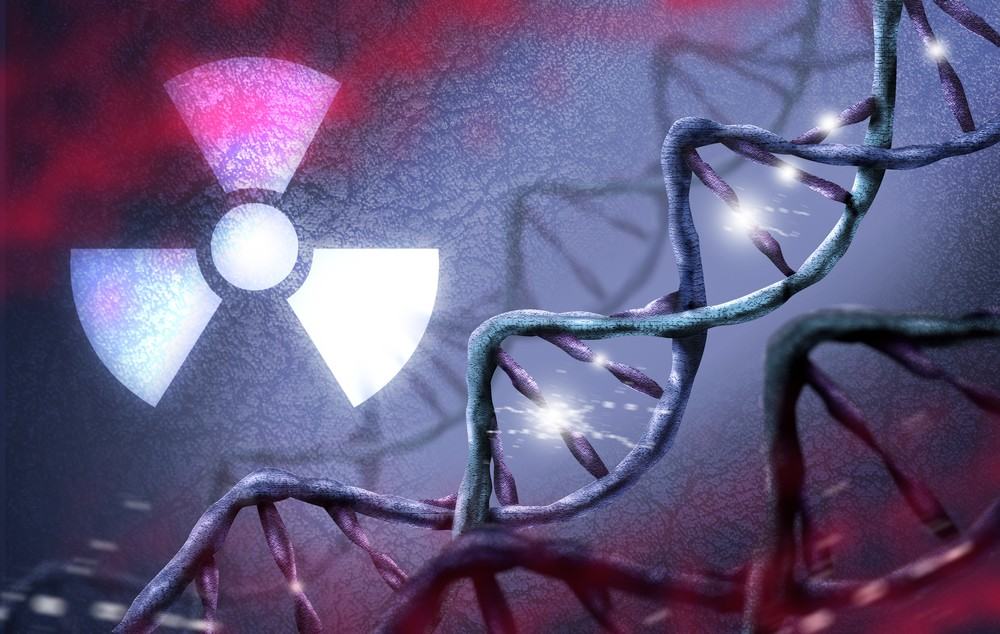
Radiation Therapy
The simple idea behind using radiation to treat cancer is to use radioactivity to stop malignant cells from reproducing. You zap cells to death or at least until they’re injured enough to stop replicating.
The problem with radiation therapy is that it is impossible to injure or kill onlymalignant cells. In the course of hurting cancerous cells, healthy cells (at the periphery of the beam) will also be injured. Some healthy cells may turn cancerous after being injured by radiation therapy.
Here’s what Dr. Jon Gofman — a professor at the University of California — has to say about ionizing radiation and human health:
- X-rays are known to cause instability in our genetic material, which is usually the central characteristic of most aggressive cancers.
- There is no risk-free dose of x-rays. Even the weakest doses of x-rays can cause cellular damage that cannot be repaired.
- There is strong epidemiological evidence to support the contention that x-rays can contribute to the development of every type of human cancer.
Consider that a typical chest x-ray delivers just a fraction of a single rad (radiation absorbed doses) of radiation. Compare this to the several thousands of rads that are typically used in the course of treating common cancers with radiation therapy, and you have a good idea of how much radiation is involved.
This makes sense, of course, as the purpose of radiation therapy is to severely injure or kills cells.
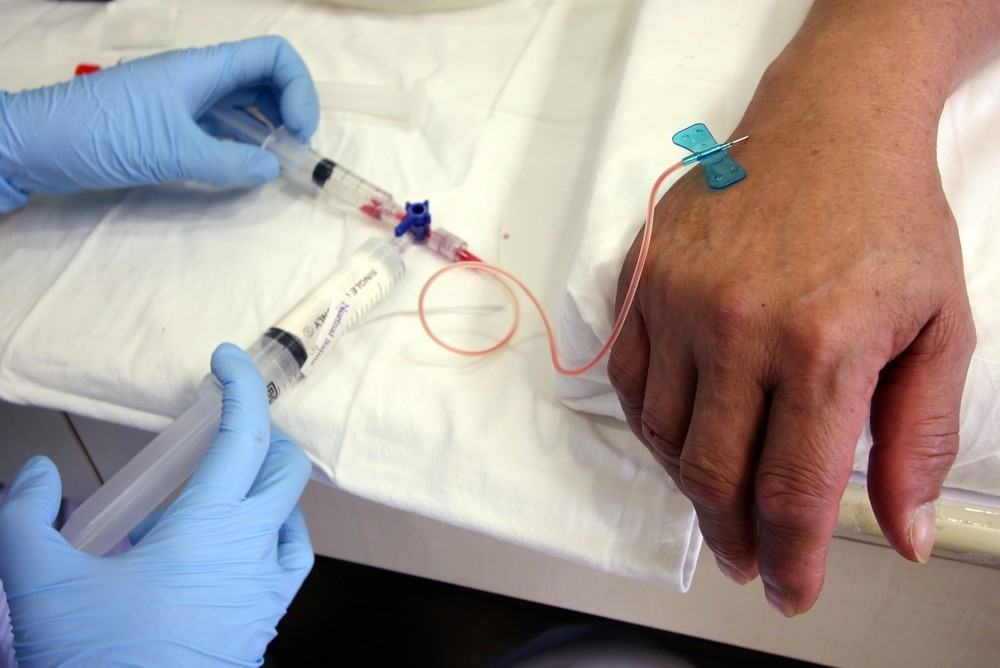
Chemotherapy
The same general idea holds true with chemotherapy. It’s simple: chemotherapy is highly toxic to every cell in your body. The chemical agents involved aren’t intelligent — they course through your bloodstream and hurt everything that they come into contact with.
The hope is that your malignant cells will be destroyed, and that enough of the rest of your cells will survive — this outcome would be deemed by the conventional medical community as a favorable response with acceptable side effects.
These “side” effects are really just effects, of course. Drugs are incapable of affecting just one part of your body. They affect every location that your bloodstream takes them to.
There’s really no need to pinpoint organs that are damaged by chemotherapy because every organ in your body gets damaged to some degree by chemotherapy — there’s no question about this, it’s a fact.
But again, please note that despite the known harmful effects of chemotherapy and radiation therapy, in some cases, statistics indicate that they do improve lifespan.
If you are diagnosed with cancer and are faced with the decision to accept or refuse these conventional therapies, I encourage you to gather facts and experiences that are relevant to your situation. Consider the type and stage of your cancer, your age, the strength of your immune system, and best and worst case outcomes.
For myself, even in knowing that there are some types and stages of cancer that can be helped with radiation and/or chemotherapy, I am relatively certain that I would never receive these treatments. But I don’t feel comfortable suggesting this same path for everyone. It’s a highly personal decision, one that should be made with a great deal of thought by you, your loved ones, and your health care provider.
Please note: A number of others in the health care field and those who provide commentary on health care have written thorough and well researched articles on this topic. If you’d like to learn about the origins of radiation therapy and chemotherapy in the treatment of cancers, an excellent resource to start with is John Robbins’ Reclaiming Our Health: Exploding the Medical Myth and Embracing the Sources of True Healing.

So, what to do about cancer?
The use of chemotherapy and radiation in the treatment of cancer stems from the conventional medical paradigm of fighting an unwanted growth. Within this paradigm, little consideration is given to how and why a malignancy develops. The mindset is to get rid of the malignancy at all costs and declare the person to be cancer-free.
A growing community of health-conscious people recognize that this mindset (let’s do everything I can to get rid of it and get on with my life!) doesn’t give the person involved his or her best chance to truly restore health. If you don’t strive to identify the factors that may have caused you to develop cancer, how can you have peace of mind that comes from knowing that you’re taking steps to prevent a re-occurrence?
As is the case with any health challenge, I feel it’s best to look at cancer as an opportunity to figure out where our lives are out of balance, and what we can do to help restore it.
If I was to develop some type of cancer, I would first look to see if it made sense to have it removed surgically.
I would then:
- 1. Ensure optimal vitamin D status — no other nutrient appears to be more important in addressing and preventing cancer of any type.
- 2. If at all possible, step away from everyday duties to give myself plenty of time and space to rest, both physically and emotionally — this can be exceptionally helpful in allowing exhausted organs to heal and shifting the body from a flight/fight state to a parasympathetic state that is essential for healing.
- 3. Spend at least two weeks ingesting nothing but freshly pressed vegetable juices— I’m not aware of a safer or more effective way of allowing the body to experience an intense cleanse while maintaining ongoing nourishment.
- 4. After an intense cleanse with freshly pressed vegetable juices, focus on eating mainly fresh plant foods and any clean animal foods that I felt like eating (like organic eggs or wild fish). The goal would be to continuously nourish all of my cellsand avoid unnecessary digestive and toxic burden from food choices.
- 5. Do everything possible to be around fresh air and take deep, mindful breaths often. Healing requires plenty of oxygen intake and regular clearance of carbon dioxide from the blood — deep cycles of inhalation and exhalation allow both to happen.
- 6. Regularly partake of an activity that I truly enjoy and could rely on to allow for a good sweat — engaging in this type of activity promotes healthy circulation of blood and lymphatic fluid, which in turn, allows for optimal immune system strength.
- 7. Minimize exposure to all significant sources of electromagnetic radiation — this includes non-essential diagnostic imaging techniques that utilize ionizing radiation, as well as regular use of a cell phone.
- 8. Regularly visualize all part of my body healing and building strength.
Perhaps most importantly, I would focus on the vision that I have for my life and how I want to be of service to those around me.
I strongly believe that no other factor has more influence over our ability to get and stay healthy than a sense of purpose that requires that we stay well for as long as possible. If you don’t feel that you have something that’s of significant value to give to the world — to some cause or even just to one other person — you likely won’t sustain the everyday effort and subconscious energy needed to will your way to good health.
Of course, the ideal scenario is to incorporate habits of healthy eating and living into everyday life to prevent cancer and other degenerative illnesses. But it takes a special understanding of the short and long term value of staying healthy for most of us to really live this way consistently. And in most cases, it also takes a powerful “why” — strong motivation to stay well — to sustain the everyday effort that is needed to access our full health potential.
I hope that this post is useful in some way.
Dr. Ben Kim is a chiropractor and acupuncturist who runs a residential fasting and chiropractic clinic in Ontario, Canada. Click here to read more of Dr. Ben Kim’s writings on health and wellness.

